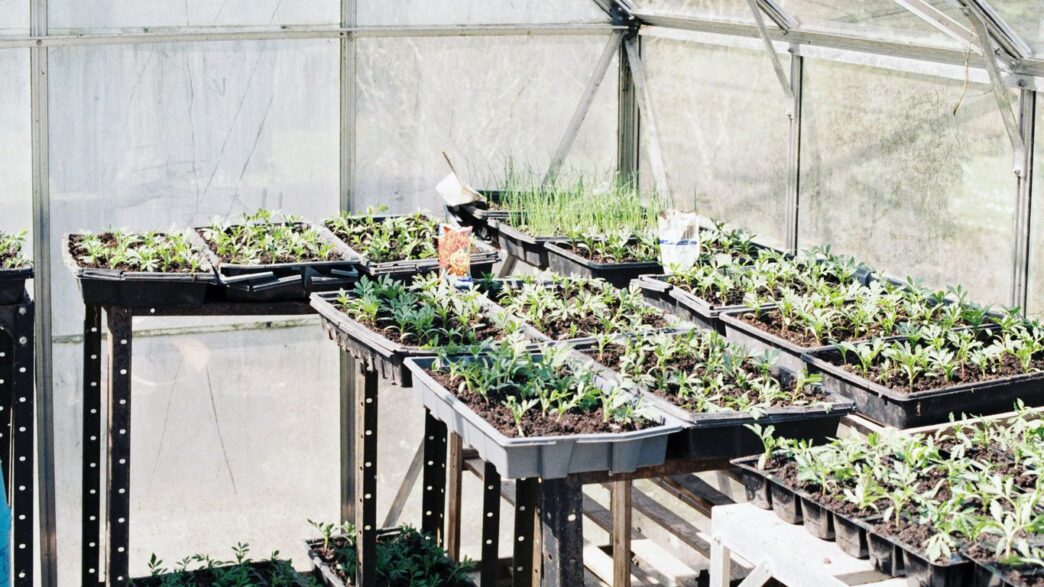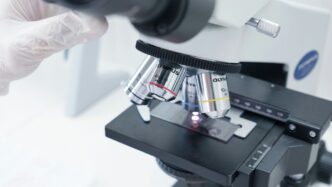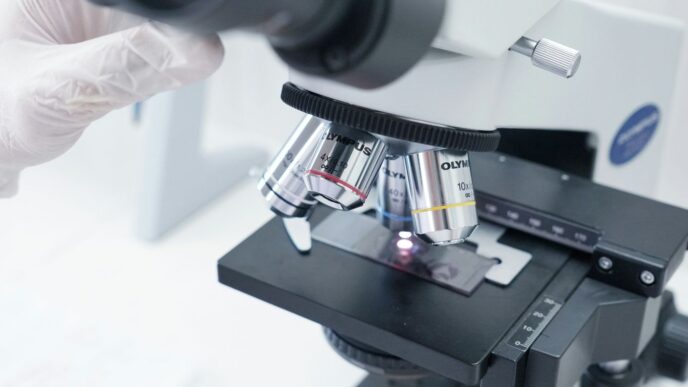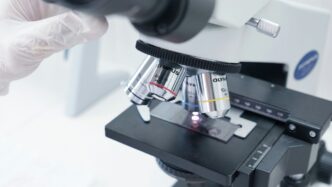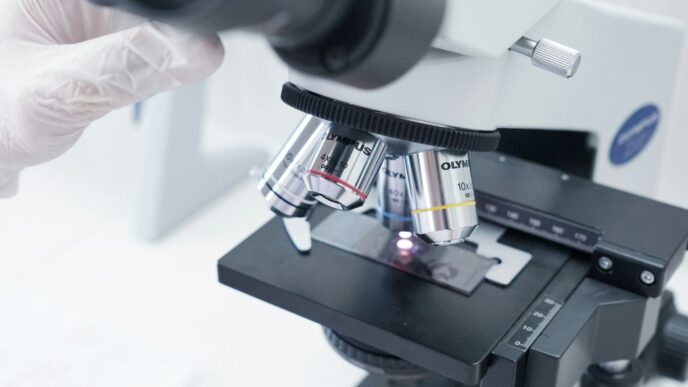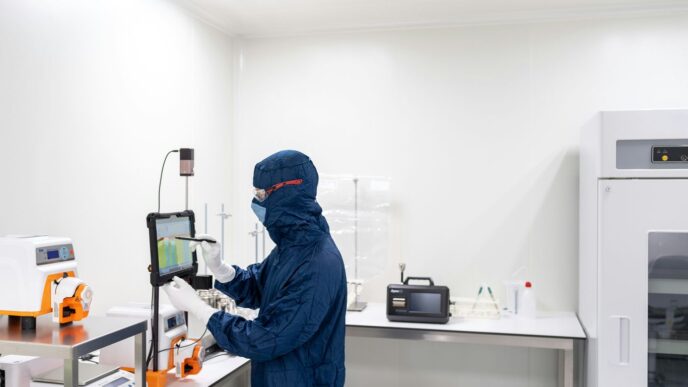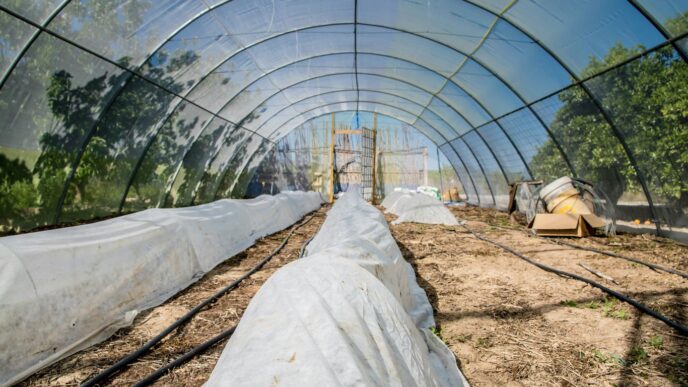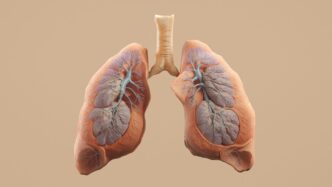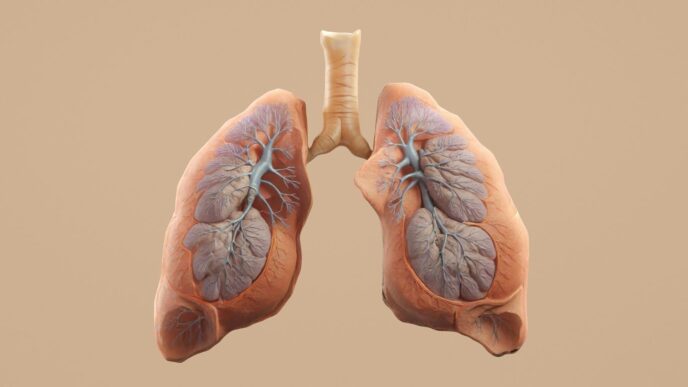Hydroponics fodder is changing the way farmers feed their animals. Instead of relying on big fields and unpredictable weather, you can now grow fresh, healthy feed right on your farm, even if you don’t have much space. The process is simple: seeds like barley or wheat are sprouted in water, not soil, and in just a week or so, you’ve got a tray full of green feed. This method uses less water, takes up less room, and gives your animals something nutritious all year long. More and more farmers are turning to hydroponics fodder because it’s practical, saves money, and is better for the environment.
Key Takeaways
- Hydroponics fodder lets you grow animal feed without soil, using water and nutrients instead.
- It uses much less water and space than traditional feed crops, which is great for small farms or dry areas.
- Animals get a steady supply of fresh, nutritious feed year-round, no matter the weather.
- Setting up a hydroponics fodder system is straightforward and doesn’t need a lot of fancy equipment.
- Switching to hydroponics fodder can cut feed costs and help make your farm more sustainable.
Understanding Hydroponics Fodder and Its Principles

Definition and Concept of Hydroponics Fodder
Hydroponics fodder is a way of growing fresh animal feed, like barley or wheatgrass, without any soil. Instead, you use trays, add seeds, and keep everything moist with a nutrient-rich water solution. The main idea is to give roots everything they need—mainly water, nutrients, and oxygen—straight to them, skipping the dirt altogether. This method allows for quick crop cycles, so you get a new batch of green feed in as little as a week. It’s pretty different from waiting months for a corn field to mature. If you’re tight on space or want something that works all year, hydroponic fodder is a solid option. Plus, it’s catching on with folks wanting to save water and grow more efficiently in both rural and urban farms.
Common Crops Used in Hydroponics Fodder Systems
When you start with hydroponics fodder, you notice some seeds are way more popular than others. That’s because they sprout fast and pack real nutrition. Here’s a quick look at the regulars:
- Barley – Sprouts in 7 days, reliable and highly digestible for cows and goats.
- Wheat – Similar to barley, but with a sweet flavor livestock like.
- Oats – Good protein content, works for horses and dairy cattle.
- Maize (corn) – Grows quick and gives decent yield.
- Sorghum – Strong in hot weather, still sprouts well in trays.
Usually, people stick with barley or wheat because they don’t need much fussing to get going. If someone runs a mixed farm, they might rotate between a few of these grains for variety.
How Soil-Free Cultivation Improves Livestock Feed
So what really changes when you skip soil? For one, you can control everything the plants get—no guessing if your ground has enough minerals. The water solution is mixed to meet the exact needs of the seed, which means better and more predictable nutrition comes out at the end. Here’s what this looks like in practice:
- Cleaner feed: No dirt or stones end up in the feed bunk.
- Fewer weeds: Seeds aren’t competing with wild plants, so the yield stays pure.
- Rapid growth: Fodder is ready in just 7-10 days.
- Consistent output: Whether it’s hot or cold outside, your system gives the same quality feed.
Below is a simple table comparing traditional and hydroponic fodder:
| Traditional Feed (Field-Grown) | Hydroponic Fodder | |
|---|---|---|
| Growth Time | Months | 7-10 days |
| Water Use | High | Very Low |
| Space Needed | Acres | Small rooms/trays |
| Nutrient Content | Depends on soil | Customizable |
| Seasonality | Weather-dependent | Year-round |
Sprouting feed this way has taken off because it’s less wasteful and pretty easy to get started, no matter where you farm—urban or rural. Social media buzz about these systems highlights just how flexible and efficient they are (improving your social media presence can help share these innovations with others). So, if you’re thinking of reliable, fast feed for your cattle or goats, hydroponic fodder is much more than a trend—it’s a practical move for the future.
Key Benefits of Hydroponics Fodder for Sustainable Livestock Farming
There’s a lot of talk about hydroponics these days, and honestly, it’s not hype. Farmers are jumping on this train for some pretty obvious reasons. Let’s break down what makes hydroponics fodder stand out when feeding livestock.
Water and Space Efficiency in Modern Farming
Water is always in short supply on farms—at least, it sure seems like it. One thing that makes hydroponics fodder attractive: you use a fraction of the water compared to traditional field crops.
Here’s a quick look:
| Farming Method | Water Use (per 1 kg fodder) | Area Required (per 1 kg fodder) |
|---|---|---|
| Traditional (soil) | 70-90 liters | 1.5 – 2 sq.m |
| Hydroponics Fodder | 6-10 liters | 0.1 – 0.2 sq.m |
- You can stack trays vertically, so even a shed or small shipping container does the job.
- Since you recycle water, there’s not much waste.
- Less land needed means you don’t have to own huge acres or rent far-off fields.
Year-Round Availability of Nutritious Feed
Mother Nature is unpredictable. Some years it’s too dry, others too wet, and the grass just doesn’t grow when you need it. Hydroponic systems cut out the weather guesswork.
- Crops like barley, oats, and wheat can grow from seed to feed in just 7-10 days.
- No off-season. Rain or shine—or snow—you’re set.
- Cows, goats, whatever livestock you have, get fresh greens every single week, not just in spring.
Environmental Impact and Lower Carbon Footprint
There’s something freeing about not relying so much on big trucks and farm machinery. Your hydroponics system is compact, uses less energy, and doesn’t need chemicals.
Here’s what changes:
- Fewer fossil fuels used, since feed doesn’t need to be shipped long distances.
- No need for chemical pesticides or herbicides, so you’re not adding junk to the environment.
- With recycling in the system, run-off and waste basically disappear.
In short, hydroponic fodder is changing the feed game—making it less wasteful, more reliable, and cleaner for the planet.
Nutritional Advantages of Hydroponics Fodder for Animals
Enhanced Nutrient Content and Bioavailability
If you’ve ever looked into animal diets, you know how much the type of feed matters. Hydroponics fodder stands out because it’s grown in a controlled space, meaning every tray of fodder packs in the nutrients the plant is supposed to provide. The absence of soil contamination and the use of well-balanced nutrient solutions result in richer, more consistent feed for livestock. Most hydroponically grown fodder—like barley or wheat—contains higher percentages of key minerals and vitamins, which the sprouted shoots make more available to animals. Because the nutrients are easier for animals to digest, less of what they eat goes to waste, maximizing the nutrition per bite.
Here’s a simple comparison of nutrient quality:
| Feed Type | Crude Protein (%) | Digestibility (%) | Calcium (mg/kg) | Vitamin A (IU/kg) |
|---|---|---|---|---|
| Hydroponic Barley | 15 – 20 | 75 – 80 | 540 | 5100 |
| Traditional Barley Hay | 10 – 12 | 55 – 60 | 320 | 2600 |
Effect on Animal Health and Productivity
Livestock fed on hydroponics fodder have been observed to show:
- Healthier coats and higher energy levels
- Improved milk yield in dairy cows
- Faster growth rates for sheep, goats, and cattle
These benefits link directly back to the digestibility and nutrient content of hydroponics-grown feed. When animals can actually use more of what they eat, it’s no wonder people see such dramatic changes in their herds. Some farms have even seen a drop in the need for expensive supplements because the base fodder ticks so many boxes nutritionally. And there’s an added bonus: consistent nutrition supports better reproductive success rates.
Reduction of Feed-Related Diseases
Traditional feeds often come with risks—mold, mycotoxins, and residue from pesticides or herbicides. Hydroponic fodder basically skips these problems. Since plants are grown in clean, controlled environments, the dangers of harmful contaminants drop sharply. Less mold in feed means fewer stomach problems or foodborne illness outbreaks in livestock. That’s a big relief for both small-scale farmers and anyone running bigger operations looking for safer options while exploring new technologies (expanding collaboration).
- Lower risk of fungus and mold
- Reduced need for veterinary intervention
- Decreased chances of chemical contamination
It’s clear that hydroponics isn’t just an efficient use of water or space—it’s helping to raise the quality and safety of animal feed from the ground up (or in this case, without the ground at all).
Hydroponics Fodder Systems: Technologies and Setups
Modern hydroponic fodder systems have completely changed the way livestock feed can be produced. They allow efficient, year-round growth of nutritious fodder with way less land, labor, and water than traditional farming. Below, let’s break down a few of the most widely used technologies and setups you’ll find in hydroponics fodder production.
Vertical Farming for Maximizing Yield
Vertical farming is pretty much what it sounds like—stacking layers of hydroponic trays or shelves one above the other. This lets you grow a massive amount of fodder in a really tight space. You’ll see:
- Stacked trays or multi-tier racks, sometimes stretching from floor to ceiling.
- Efficient use of artificial lights, if there’s not enough sunlight.
- Optimal for cramped areas like urban farms, greenhouses, or even refurbished shipping containers.
Here’s a quick snapshot of space use for vertical vs. conventional setups:
| System Type | Fodder Yield / Sq. Ft. (per week) | Water Use per Pound Fodder |
|---|---|---|
| Traditional Soil | 0.2–0.4 lbs | 15–20 gallons |
| Vertical Hydro | 2–3 lbs | 1–2 gallons |
That’s a pretty striking difference in both crop density and water savings.
Nutrient Film Technique and Deep Water Culture
These two hydroponic methods are constantly used in fodder systems, each with their own perks:
- Nutrient Film Technique (NFT): Plants grow in shallow channels where a thin layer of nutrient solution flows over the roots. It works well for fast-growing fodder crops, like barley or wheatgrass, and is easy to build and clean.
- Deep Water Culture (DWC): Plants are suspended with their roots totally submerged in a tank of aerated, nutrient-rich water. It’s a super simple design that’s reliable for consistent production.
Key benefits of NFT and DWC systems include:
- Rapid seed-to-harvest cycles (about 7–10 days)
- No soil mess or weed management
- Lower disease risk from pathogens hiding in dirt
Automated Hydroponics Fodder Containers
For folks who want a fuss-free, all-in-one solution, automated fodder containers are the latest thing. These are usually ready-made, climate-controlled units (often built from shipping containers). Set up is a breeze:
- "Plug-and-play" installation—just add water and seeds.
- Integrated watering, lighting, and temperature controls
- Minimal hands-on labor since everything is automated
- Can operate indoors or outdoors, rural or urban
Farmers love these containers because, once set up, they need very little attention, and about anyone can run them—even with no hydroponics background. Plus, they use far less water compared to old-school methods, sometimes cutting water use by up to 90% while delivering reliable, nutritious feed year-round.
If you’re considering trying hydroponics for your livestock, exploring the different hydroponic fodder containers and vertical setups can help you figure out what’s right for your farm. There’s a lot of flexibility, from DIY basic racks to high-tech automated containers. With technology shifting fast, it’s definitely worth keeping an eye on new developments if you want to keep your feed operation both efficient and sustainable.
Practical Guide to Setting Up Hydroponics Fodder on Your Farm

Getting started with hydroponics fodder might sound intimidating, but truthfully, you don’t need a long shopping list or any weird gadgets. Here’s what most farms will need:
- Trays for sprouting seeds (usually plastic, with drainage holes)
- A water pump to circulate water and nutrients
- A reservoir to hold your nutrient solution
- Grow lights, if you can’t rely on daylight
- Seeds (think barley, wheat, oats, or rye)
- A basic timer and temperature regulation, especially if your barn or shed gets super hot or cold
- pH and EC meters to check water quality
That’s the core setup. Some folks add automated misters or heaters, but that’s optional. If you’re buying a ready-made container, a lot of this will be bundled and basically plug-and-play.
Setting the system up doesn’t take all weekend. Most people can get through these steps in a day or two, especially with some extra hands.
- Find a shaded area or indoor spot with enough room for your trays and tanks.
- Set up the shelves or racks for the trays.
- Connect the water reservoir and pump so water can reach every tray. Make sure it drains back into the reservoir.
- Put your seeds in the trays and soak them. Spread them evenly so you get a nice, thick mat.
- Mix up the nutrient solution following the instructions, pour it into the reservoir, and switch on the pump.
- Plug in the lights or open windows for natural sunlight (aim for around 12 hours of light if possible).
- Check the pH and EC. You’ll want pH between 6.0 and 6.5 for most fodder, and EC right for your chosen crop.
- Observe for a couple days—make sure the water is flowing and not pooling.
No system is ever totally maintenance-free, even if it feels close. Here are a few tips to keep things smooth:
- Rinse and clean trays between batches to stop mold or disease from spreading.
- Check the pump, reservoir, and water flow daily, especially if it’s your first run.
- Watch for any slimy or smelly patches—that’s usually a sign something’s off (overwatering, poor air flow, low light, or dirty trays).
- Track how much water you’re adding or losing, to spot leaks early.
- If growth stalls or seed germination drops, double-check your light and temperature. Livestock fodder likes it mild and bright.
| Common Troubleshoot Issue | Possible Cause | Quick Fix |
|---|---|---|
| Moldy seeds or trays | Too much water, poor drainage | Reduce watering, clean trays |
| Yellowing sprouts | Nutrient imbalance or lack of light | Adjust mix, add more light |
| Pump failure | Blocked intake or electrical fault | Clean intake, check wiring |
Honestly, the main headache is usually forgetting to refill the reservoir—anything else is fixable with a quick tweak. Stick with these basics, and pretty soon producing hydroponic fodder will just become another part of your farm routine.
Economic and Environmental Impacts of Adopting Hydroponics Fodder
Comparison to Traditional Feed Costs
Hydroponics fodder systems are often seen as a smart investment for farmers trying to control expenses. After the initial setup, the ongoing costs can be much lower than those for regular field-based feed. Here’s a simple breakdown comparing general input costs for both approaches:
| Input | Traditional Feed | Hydroponics Fodder |
|---|---|---|
| Water Use | High | Very Low |
| Land Requirement | High | Minimal |
| Labor | High | Low |
| Time to Harvest | Weeks-Months | 7-10 Days |
| Transport | Often Necessary | Usually On-site |
A hydroponics fodder setup slashes the need for water and land. That means less money spent on irrigation, land leases, fuel, and often even insurance. Once running, the automated system maintenance is less labor-intensive because lighting, watering, and air flow are all controlled inside the system. Farmers can get more harvests each year too, since production cycles are fast.
Reducing Resource Inputs and Waste
There are a few big ways that switching to hydroponics cuts resource use and waste:
- Uses up to 90% less water, recirculating the little water it does need so almost nothing is wasted.
- Operates in tight spaces, which is a lifesaver for small or urban farms.
- Nearly all parts of the crop are used, so you won’t have mounds of leftover stalks or hulls.
- Less spoilage, as the rapid cycle means livestock eat it fresh right off the trays.
Hydroponics systems need fewer fertilizers and skip the pesticides altogether. That means cleaner leftover water, so there isn’t runoff that could harm local streams or groundwater. On top of that, most systems keep energy use low, especially compared with plowing fields or long-haul hauling feed around.
Supporting Sustainability Goals in Agriculture
Hydroponics fodder is a practical step toward real environmental sustainability in farming. Here’s why:
- Local on-demand production means feed isn’t trucked long distances, so it shrinks the carbon footprint.
- No soil needed, so there’s no erosion or chemical runoff.
- Water savings are good for the farm and for the local environment, especially where water is tight.
- Systems are adaptable, scaling up or down as farm needs change.
More and more producers are using hydroponics fodder as part of their plan to meet demanding sustainability goals—helping both the planet and their bottom line.
Advanced Techniques and Innovations in Hydroponics Fodder Production
Hydroponics fodder isn’t just about basic water trays and lights anymore. If you dig a little deeper, there are all sorts of advanced methods popping up that really push the boundaries. Here’s a closer look at some of the most interesting techniques farmers are trying out right now.
Aeroponics for Superior Fodder Quality
Aeroponics takes things up a notch by letting plant roots dangle in the air while periodically misting them with a nutrient solution. This process gives roots more oxygen and keeps diseases at bay, helping the plants grow quickly and stay healthy.
- Roots get direct exposure to oxygen, leading to faster sprouting.
- Water and nutrients are used very efficiently since there’s almost no runoff.
- The risk of root rot is much lower compared to systems where roots sit in water all day.
A lot of folks are excited about aeroponics because it works well for growing short-cycle crops that animals eat fresh—like barley and wheat—which do great with their roots in the mist, rather than in water all the time.
Controlled Environment Agriculture (CEA)
Controlled Environment Agriculture (CEA) is kind of what it sounds like: having total control over the conditions your plants grow in. In the world of fodder, this can mean regulated lighting, temperature, humidity, and even custom-tailored nutrients.
Here’s what CEA can look like on a farm:
- Automated climate control to keep temperatures steady, even during weird weather.
- Special light schedules to maximize growth.
- Sensors that fine-tune nutrient mixes or water levels so plants always have what they need.
CEA is also drawing inspiration from tech trends shaking up other fields, like wire-free designs eliminating cables, which helps with automating everything from irrigation to lighting.
Emerging Trends in Automation and Scalability
Automation is making waves in fodder production, letting farmers grow more with less hassle. Automated hydroponic fodder containers and vertical rack systems are a good example—they can be set up to plant, mist, light, and even harvest with almost no hands-on work.
Some innovations to watch:
- Systems that use robotics for seeding and harvesting trays.
- Remote monitoring and automatic alerts sent straight to your phone.
- Modular setups, so you can scale up by adding more units without much extra work.
Sample Comparison Table: Manual vs Automated Systems
| Feature | Manual System | Automated System |
|---|---|---|
| Labor Hours/Week | 12 | 3 |
| Crop Failure Rate (%) | 10% | 2% |
| Average Harvest/Week | 200 lbs | 600 lbs |
Farms moving to automated and scalable setups are seeing higher yields, fewer failures, and much less time spent troubleshooting. At the end of the day, these high-tech options might seem high-tech, but they’re fast becoming the new norm for anyone serious about sustainable feed production.
Conclusion
So, after looking at all the ways hydroponic fodder is changing things for livestock farmers, it’s pretty clear this isn’t just a passing trend. It’s a practical fix for a lot of the headaches that come with traditional feed—like needing lots of land, water, and time. With these systems, you can grow fresh, healthy feed almost anywhere, and you don’t have to worry so much about drought or bad weather messing up your supply. Plus, it’s easier on the wallet in the long run and better for the planet. If you’re thinking about making your farm more efficient or just want to try something new, hydroponic fodder is definitely worth a shot. It’s simple, quick, and could make a real difference for your animals and your bottom line.
Frequently Asked Questions
What is hydroponic fodder and how does it work?
Hydroponic fodder is animal feed grown without soil. Seeds like barley or wheat are placed in trays and watered with a nutrient solution. The plants sprout and grow quickly, usually in 7-10 days, giving fresh, green feed for livestock.
Which crops are most popular for hydroponic fodder systems?
Barley, wheat, and oats are the most common crops used. These grains sprout easily and grow fast, making them perfect for hydroponic systems. Some farmers also use corn or sorghum.
How does hydroponic fodder help save water and space?
Hydroponic systems recycle water, so they use up to 90% less than regular farming. They also let you grow lots of feed in small spaces by stacking trays or using vertical shelves, making them great for small farms or cities.
Is hydroponic fodder healthier for animals than regular feed?
Yes, hydroponic fodder is packed with vitamins and minerals. It is fresh and easy for animals to digest, which can help them grow better and stay healthy. Animals eating hydroponic fodder often have shinier coats and more energy.
How much time does it take to grow hydroponic fodder?
It usually takes about 7 to 10 days from planting the seeds to harvesting the fodder. This fast growth means you can have a steady supply of fresh feed all year long.
Can I set up a hydroponic fodder system at home or on a small farm?
Yes! Hydroponic fodder systems are easy to set up and don’t need a lot of space. All you need are growing trays, a water pump, a light source, and a nutrient solution. Many systems are plug-and-play and work well for beginners.


